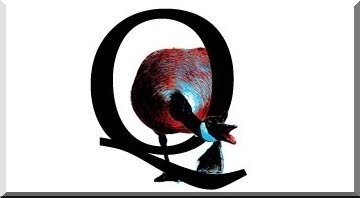 |
| Courtesy of Aarhus University Hospital Centre |
By Brody Levesque | AARHUS, DENMARK -- Danish medical scientists and researchers at Aarhus University Hospital have announced that they believe that there will be a breakthrough in finding a cure for the human immunodeficiency virus (HIV) “within months."
Researchers are testing a new technique that involves flushing the virus from so-called reservoirs in human DNA where the HIV virus is stripped from human DNA and then destroyed permanently by the body’s immune system.
Researchers are testing a new technique that involves flushing the virus from so-called reservoirs in human DNA where the HIV virus is stripped from human DNA and then destroyed permanently by the body’s immune system.
HIV infection is a condition caused by the human immunodeficiency virus (HIV). The condition gradually destroys the immune system, which makes it harder for the body to fight infections.
The Telegraph UK reported that the results of the trial tests, where the technique has already been proven to work in laboratory, now has shifted to human trials currently being conducted.
The results of the laboratory tests convinced the Danish Research Council to awarded 12 million Danish Kroner ($2.97 million) to carry out clinical trials on humans.
“I am almost certain that we will be successful in releasing the reservoirs of HIV. The challenge will be getting the patient’s immune system to recognize the virus and destroy it.
This depends on the strength and sensitivity of individual immune systems,” Dr. Ole Sogaard, a senior researcher at the Aarhus University Hospital in Denmark, said.
Dr. Sogaard also noted that 15 patients are currently taking part in the human trials and if those patients respond to positively to the treatment then the programme will be expanded. Sogaard cautioned that certain behaviours; such as unprotected sex and sharing needles remained of paramount importance in the fight against HIV and that a cure is not the same as a preventative vaccine.
According to the National Institutes For Health in Bethesda, Maryland, the current regime of medications and treatment make it possible for an HIV-POS patient to live live a relatively normal life with few side effects even into old age, but if treatment is stopped then symptoms reappear within two weeks.
The Danish research team is using a technique utilising powerful drugs called Histone deacetylase inhibitors, (HDAC) which, have a long history of use in psychiatry and neurology as mood stabilizers and anti-epileptics and also as treatments for cancers and inflammatory diseases. The treatment potential was discovered almost by accident when Timothy Brown an HIV sufferer developed leukemia. He had a bone marrow transplant from a donor with a rare genetic mutation, which made his cells resistant to HIV. Brown, who became known as "the Berlin patient," became the first man to ever be fully cured of the disease.
His case caused a revolution in research, with two new principal approaches. The first is gene therapy, which is expensive and not easily transferable to gene pools around the world, and aims to make a person’s immune system resistant to the HIV virus. The second being the HDAC inhibitor approach.
Worldwide the number of new infections in adults has become broadly stable for the past 4 years. In 2011, 0.77% of the world’s population or 34 million people were recorded as suffering from HIV, according to the World Health Organization (WHO).





















0 comments:
Post a Comment